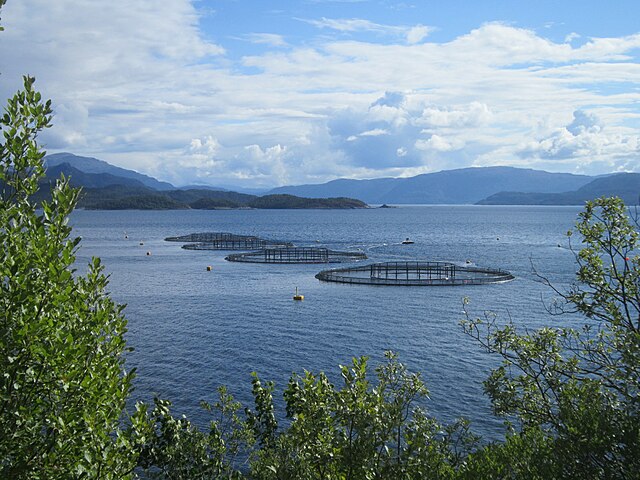A wild salmon fishing ban has begun on Norway’s 33 select rivers, in a bid to revamp a downturn in Atlantic salmon numbers. This a few days after details of late June and early July price decline of Norwegian salmon emerged.
The decision follows a June 22, 2024 initial temporary closure on the 33 rivers, pending the latest review on July 5.
This most recent resolution owes to scientific data that seasonal returnees from the sea have fallen by 50% in 20 years. The numbers of returnees, which come back to spawn in rivers, also plunged in 2023 by 30% from 2022 levels.
On top of this, sea salmon deaths from farm-related sea lice are increasing due to frequent contact with farm-raised salmon that escape into rivers. Reports indicate that between 2010 and 2014, 50,000 wild salmon succumbed to sea lice due to such contact.
According to Ellen Hambr, the Norwegian Environment Agency’s director, the ban decision is therefore dire to avert “long-term failure.”
Key Rivers
All 33 rivers that face this fishing termination run across the southwest of the Nordic nation from the Norwegian Sea.
One of the important waterways under the ban is central Norway’s Gaula river. 145-km long, it is home to some of the biggest Atlantic salmon worldwide that average 20 to 30-pounds.
The other important river also under the ban is the Orkla, situated south of Trondheim. It is a haunt of healthy stocks, including a record 25-kg salmon.
Also on the shortlist is the Størdalselva river near the Sweden border, which spans 70 km. The waterway has an exclusive 2-km long salmon-fishing area for all anglers.
The moratorium will thus affect over 100,000 anglers who usually pay 286 kroner ($26.94) per year (2022 fee) for river fishing.
In short, the coming of the wild salmon fishing ban puts the pastime of thousands of Norwegians at a stop. But as the data below shows, this ban could protect rapidly ever-falling wild stocks both at sea and on rivers.
Norway Wild Salmon Statistics
Norway produced 1.5111 million tonnes of Atlantic salmon in 2022, according to the Food and Agricultural Organization (FAO). The Norwegian Institute for Nature Research (NASF) cites that farmed salmon amount to 1.2 million tonnes of the yearly catches. This leaves a population of just 530,000 wild salmon fish that come to internal waters each year. This is in turn shows that levels have fallen by 50% in the 24-year period between 1983/86 and 2017/20.
What is causing depreciating wild salmon numbers in Norway?
According to NASF, 200,000 farmed salmon escape each year from farms onto rivers and contaminate wild salmon with sea lice. NASF indicates that 29% of key rivers where such contacts happen have critical contamination levels. Furthermore, interbreeding between wild and farmed salmon has reached 71% of rivers in Norway.
How many wild salmon does Norway fish each year?
Norway’s scientific data shows that in 2020, the country harvested 148,000 wild Atlantic salmon at sea and in rivers, totalling 527 tonnes. Furthermore, anglers released back to the sea and rivers 29,000 wild Atlantic salmon equal to 115 tonnes in 2020.
